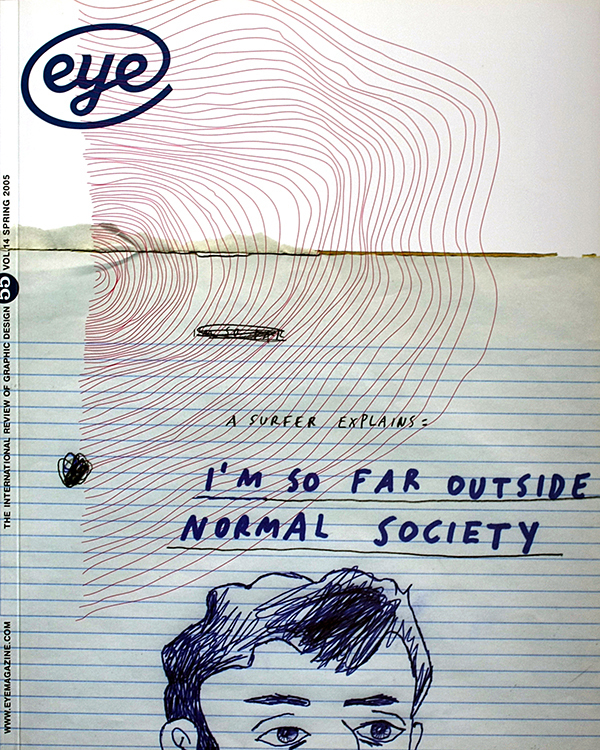Spring 2005
Revolutionary material in the flesh
H. N. Werkman
El Lissitzky
Jan Tschichold
Max Bill
Herbert Bayer
Theo van Doesburg
Piet Zwart
Ladislav Sutnar
Alexander Rodchenko
John Heartfield
Kurt Schwitters
Kurt Schwitters
László Moholy-Nagy
Dziga Vertov
Gustav Klutsis
Design history
Graphic design
Reviews
Avant-Garde Graphics 1918-1934
Touring exhibition. Exhibition curated by Lutz Becker. Catalogue by Lutz Becker, Richard Hollis, Hayward Gallery, £14.95Glasgow’s Hunterian Gallery is home to a collection of James Abbott McNeill Whistler’s portraits, yet his subjects have been keeping dangerous company lately. The chatter of his elegant ladies has been hushed by the klaxon call of urgent typography, fine porcelain trembling as the gallery fizzes and cracks with shards of primary colour. For the organisers of this exhibition, the setting may well be perfect.
This travelling exhibition – organised by the Hayward Gallery, London – features posters, flyers, books and film from all the leading strands of twentieth-century Modernism. There are nearly 150 pieces, borrowed from the vast collection of the American Merrill C. Berman. It also provides a sort of homecoming as it is the first time that many of these works have been shown in Europe. The show is curated by filmmaker Lutz Becker and accompanied by a brightly illustrated catalogue with informed essays by Becker and designer and design historian Richard Hollis.
The exhibits themselves are loosely grouped by movement or medium – The Bauhaus, Constructivism, film and photomontage – and Becker really brings out the family silver: Joost Schmidt’s Bauhaus exhibition poster of 1923 and Théo Ballmer’s International Office poster of 1928 accompany spreads from H. N. Werkman’s The Next Call and El Lissitzky’s Story of Two Squares. Jan Tschichold film posters sit comfortably with typography by Max Bill. There are also significant contributions from designers such as Herbert Bayer; Théo van Doesburg; Piet Zwart; Ladislav Sutnar; Aleksandr Rodchenko; John Heartfield; and Kurt Schwitters, as well as film from László Moholy-Nagy and Dziga Vertov.
Within this gathering of the iconic and the familiar, there are plenty of surprise gems, most noticeably in photomontage. The delicacy of Marianne Brandt’s American Sisters of 1928 and Johannes Molzahn’s Home and Workspace poster of the same year are well supported by works from the Soviet Union, and in particular the Vkhutemas School of Moscow.
Gustav Gustavovich Klutsis was one of the professors at the Vkhutemas, a Red Army veteran of 1917, student of Malevich and a leading pioneer of photomontage. The exhibition includes a 1931 poster by Klutsis that announces ‘The reality of our programme is active men and women – you and I’. It presents a casual ‘Uncle’ Joe Stalin marching with workers to the coalface. Yet within a few years of this work, the committed Bolshevik Klutsis was arrested. Soon after he died in a Moscow jail. With all these exhibits, it is all too easy to get carried away with the formal innovation and forget the fragile context in which it was made.
This is a strong exhibition, particularly rewarding for those raised on pallid reproductions that fail to communicate the subtleties of scale or material. It offers a unique opportunity to see the stuff in the flesh, the scalpel marks and brushstrokes, the scrawny handwriting and hurried repairs. Yet it would have been helpful to have a little more information as to what became of the many designers featured in this show. Though it is full of raw energy and optimism, this collection serves to remind the visitor of the destructive terrors that were soon to follow, of the lives and communities to be violently uprooted and scattered. Klutsis was one among many.
Steve Rigley, designer and educator, Glasgow
First published in Eye no. 55 vol. 14 2005
Eye is the world’s most beautiful and collectable graphic design journal, published quarterly for professional designers, students and anyone interested in critical, informed writing about graphic design and visual culture. It is available from all good design bookshops and online at the Eye shop, where you can buy subscriptions and single issues.

